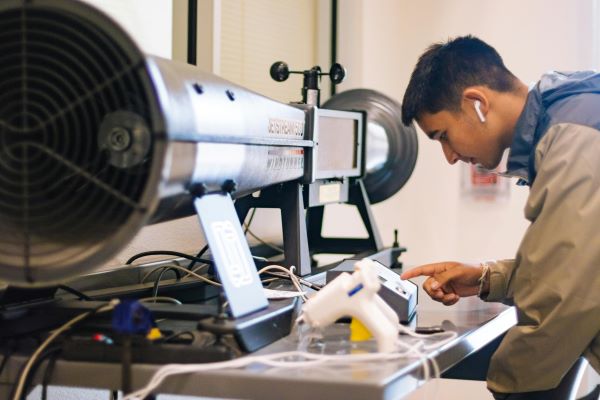As technology continues to shape the modern world, computer science (CS) has become an essential part of high school education. But what exactly does a high school computer science curriculum include? From foundational skills to advanced concepts, these programs are designed to equip students with the knowledge and tools they need to thrive in a digital future. Here’s an overview of the key components commonly found in high school computer science curricula.
1. Introduction to Computer Science
Many programs begin with an introductory course that covers the basics of computer science. This serves as a foundation for more advanced topics and typically includes:
- History of Computing: Understanding the evolution of computers and technology.
- Basic Computer Literacy: Familiarization with hardware, software, and operating systems.
- Algorithms and Problem-Solving: Learning how to approach problems methodically and create efficient solutions.
- Programming Basics: Introduction to coding concepts, such as variables, loops, and conditional statements, often using beginner-friendly languages like Python or Scratch.
2. Programming and Software Development
As students progress, they dive deeper into programming languages and development practices. Courses often cover:
- Intermediate Programming: Using languages such as Java, C++, or JavaScript to build applications.
- Software Development Life Cycle (SDLC): Understanding the steps involved in designing, developing, testing, and maintaining software.
- Debugging and Testing: Learning how to identify and fix coding errors.
Hands-on projects like creating simple games, websites, or mobile apps are typically included to enhance learning through practical application.
3. Web Development
Web development is a popular focus area, teaching students how to create and manage websites. This includes:
- HTML and CSS: Building and styling web pages.
- JavaScript: Adding interactivity to websites.
- Responsive Design: Ensuring websites function well on different devices.
- Introduction to Frameworks: Familiarity with tools like Bootstrap or React for advanced web development.
4. Data and Databases
Understanding how to work with data is an important skill in today’s digital landscape. Topics covered may include:
- Data Structures: Introduction to arrays, lists, stacks, and queues.
- SQL and Databases: Learning how to create, read, update, and delete data in databases.
- Big Data Concepts: An overview of how large datasets are managed and analyzed.
5. Cybersecurity and Ethics
With growing concerns about online security, many curricula include modules on cybersecurity and ethical computing. These may cover:
- Cyber Threats: Understanding common threats like malware, phishing, and ransomware.
- Security Practices: Learning about encryption, firewalls, and secure coding.
- Digital Citizenship: Discussing responsible technology use, privacy, and ethical considerations.
6. Robotics and Artificial Intelligence (AI)
Advanced courses often introduce cutting-edge fields like robotics and AI. Students may learn:
- Robotics Basics: Programming and controlling robots using platforms like Arduino or LEGO Mindstorms.
- AI Fundamentals: Understanding machine learning, neural networks, and natural language processing.
- Applications of AI: Exploring real-world uses of AI in industries like healthcare, finance, and entertainment.
7. Computational Thinking and Problem-Solving
Computational thinking is a core aspect of computer science education. This involves:
- Decomposition: Breaking down complex problems into manageable parts.
- Pattern Recognition: Identifying similarities in data or processes.
- Abstraction: Simplifying problems by focusing on relevant details.
- Algorithm Design: Developing step-by-step instructions to solve problems.
These skills are valuable not just in computer science but in various other disciplines and real-life scenarios.
8. AP Computer Science Courses
For students seeking college credit or advanced learning, Advanced Placement (AP) courses are an excellent option. The two primary AP CS courses are:
- AP Computer Science Principles: Covers broad CS concepts, including programming, data, and the impact of computing on society.
- AP Computer Science A: Focuses on programming and problem-solving using Java.
Both courses prepare students for college-level computer science studies.
9. Electives and Specialized Topics
High schools with robust CS programs may offer electives that allow students to explore specific interests, such as:
- Game Development: Using engines like Unity or Unreal to create video games.
- Mobile App Development: Building apps for Android and iOS.
- Networking: Learning about network protocols, routers, and the internet infrastructure.
10. Career and College Readiness
Finally, many curricula include elements that prepare students for life after high school. This might involve:
- Internships: Partnering with local businesses or tech organizations.
- Certifications: Offering preparation for industry certifications like CompTIA IT Fundamentals or Microsoft Technology Associate.
- Portfolio Development: Encouraging students to compile their projects into a portfolio to showcase their skills.
Conclusion
A high school computer science curriculum is designed to provide students with a solid foundation in technology and programming, while also fostering critical thinking and creativity. Whether students pursue careers in tech or use their skills in other fields, these courses prepare them for a future where digital literacy is essential. With a mix of theoretical knowledge and hands-on practice, high school CS programs can inspire the next generation of innovators and problem-solvers.

